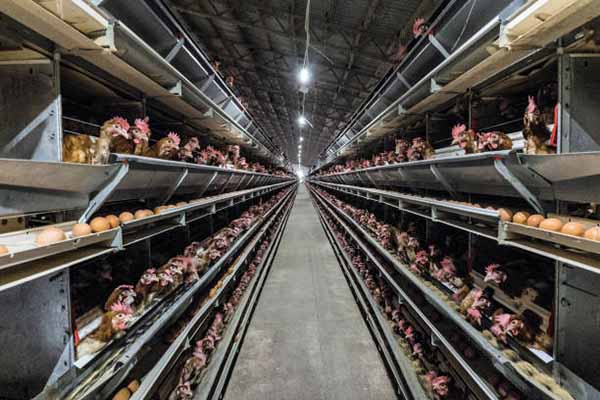How to Start a Chicken Breeding Farm: A Comprehensive Guide
Time : 2025-07-03
Starting a chicken breeding farm can be a rewarding venture. Whether you’re aiming to sell eggs or raise chickens for meat, it’s crucial to have a clear understanding of the process and the necessary equipment. In this guide, we’ll walk you through the essential steps to help you get started on your chicken breeding farm journey.
1. Research and Planning
The first step in starting a chicken breeding farm is thorough research. Here are some key points to consider:
1.1. Market Research
Understand the demand for chicken products in your target market. Research local competition, identify your unique selling points, and determine the best location for your farm.
1.2. Legal Requirements
Ensure that you comply with all local regulations, such as obtaining the necessary permits and licenses. This may include health inspections, zoning approvals, and biosecurity measures.
1.3. Business Plan
Develop a comprehensive business plan outlining your objectives, marketing strategy, financial projections, and operational procedures.
2. Selecting the Right Breed
Choosing the right chicken breed is crucial for the success of your breeding farm. Consider the following factors:
2.1. Purpose
Determine whether you’ll be focusing on egg production or meat production. Different breeds are better suited for specific purposes.
2.2. Hardiness
Choose a breed that is well-adapted to the climate and environment of your farm.
2.3. Growth Rate
Select a breed with a desirable growth rate to ensure efficient production.
2.4. Egg Laying Capacity
For egg production, consider breeds with high laying capacity and good egg quality.
3. Acquiring Chicken Breeders
Once you’ve selected your breed, it’s time to acquire your breeding stock. Here are some tips:
3.1. Source
Purchase your chickens from reputable breeders or suppliers. Ensure that they are healthy and free from diseases.
3.2. Health Checks
Perform regular health checks on your chickens to identify and address any potential issues early on.
3.3. Quarantine
Quarantine new arrivals for at least 21 days to prevent the spread of diseases to your existing flock.
4. Setting Up the Farm
A well-designed farm layout and appropriate facilities are essential for the success of your chicken breeding operation. Here are some key considerations:
4.1. Chicken Coops
Build or purchase chicken coops that provide adequate space, ventilation, and lighting for your chickens. Ensure that the coops are easy to clean and maintain.
4.2. Feeding Equipment
Invest in high-quality feeding equipment, such as automated feeders, to ensure your chickens receive a balanced diet.
4.3. Watering Systems
Install reliable watering systems, such as nipple drinkers or waterers, to provide fresh water to your chickens at all times.
4.4. Heating and Cooling Systems
If you’re raising chickens in an area with extreme temperatures, consider installing heating and cooling systems to maintain an optimal environment for your birds.
4.5. Biosecurity Measures
Implement biosecurity measures to prevent the introduction and spread of diseases. This may include restricted access to the farm, regular cleaning and disinfection of facilities, and isolation of new arrivals.
5. Breeding and Management
Effective breeding and management practices are vital for the success of your chicken breeding farm. Here are some tips:
5.1. Genetic Selection
Choose the best-performing chickens for breeding, based on traits such as egg production, growth rate, and health.
5.2. Artificial Insemination
Consider using artificial insemination to improve fertility and control breeding schedules.
5.3. Monitoring Health
Regularly monitor the health of your flock to detect and address any issues promptly.
5.4. Vaccinations and Deworming
Follow a vaccination and deworming schedule to keep your chickens healthy and reduce the risk of disease outbreaks.
5.5. Record Keeping
Maintain accurate records of breeding activities, health checks, and any other relevant information to help you make informed decisions.
6. Marketing and Sales
To generate revenue from your chicken breeding farm, you’ll need a solid marketing and sales strategy:
6.1. Identify Your Target Market
Understand who your customers are and tailor your marketing efforts accordingly.
6.2. Develop a Brand
Create a strong brand that resonates with your target market and highlights the quality of your chicken products.
6.3. Build Relationships
Develop relationships with local businesses, restaurants, and other potential customers to establish a steady market for your chicken products.
6.4. Utilize Online Marketing
Leverage social media, online advertising, and other digital marketing strategies to reach a wider audience.
Conclusion
Starting a chicken breeding farm can be a challenging but rewarding endeavor. By following this comprehensive guide, you’ll be well-prepared to overcome the obstacles and achieve success in your farming venture. Remember to prioritize research, planning, and execution, and always stay informed about the latest developments in the poultry industry.












